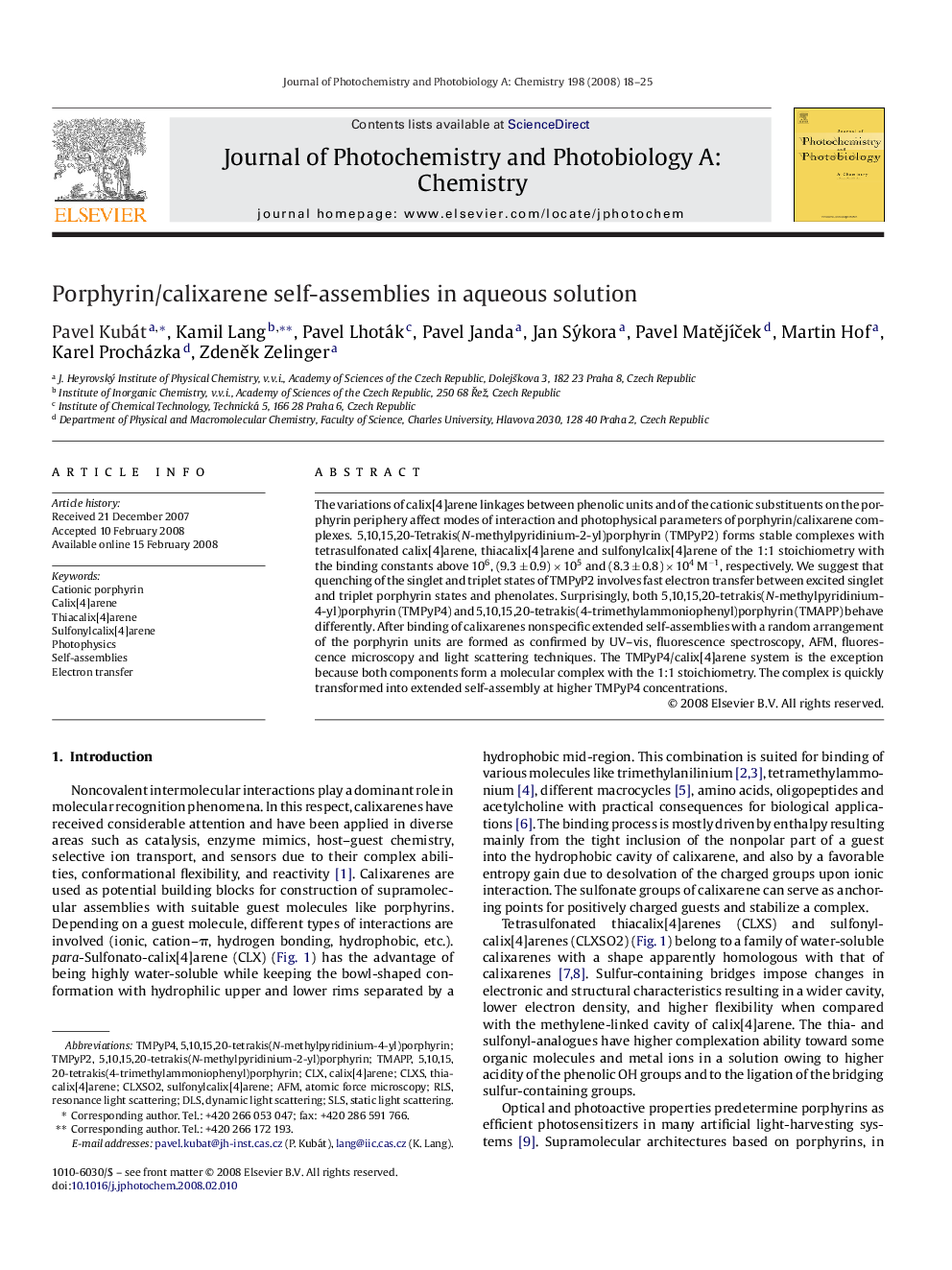| Article ID | Journal | Published Year | Pages | File Type |
|---|---|---|---|---|
| 28652 | Journal of Photochemistry and Photobiology A: Chemistry | 2008 | 8 Pages |
The variations of calix[4]arene linkages between phenolic units and of the cationic substituents on the porphyrin periphery affect modes of interaction and photophysical parameters of porphyrin/calixarene complexes. 5,10,15,20-Tetrakis(N-methylpyridinium-2-yl)porphyrin (TMPyP2) forms stable complexes with tetrasulfonated calix[4]arene, thiacalix[4]arene and sulfonylcalix[4]arene of the 1:1 stoichiometry with the binding constants above 106, (9.3 ± 0.9) × 105 and (8.3 ± 0.8) × 104 M−1, respectively. We suggest that quenching of the singlet and triplet states of TMPyP2 involves fast electron transfer between excited singlet and triplet porphyrin states and phenolates. Surprisingly, both 5,10,15,20-tetrakis(N-methylpyridinium-4-yl)porphyrin (TMPyP4) and 5,10,15,20-tetrakis(4-trimethylammoniophenyl)porphyrin (TMAPP) behave differently. After binding of calixarenes nonspecific extended self-assemblies with a random arrangement of the porphyrin units are formed as confirmed by UV–vis, fluorescence spectroscopy, AFM, fluorescence microscopy and light scattering techniques. The TMPyP4/calix[4]arene system is the exception because both components form a molecular complex with the 1:1 stoichiometry. The complex is quickly transformed into extended self-assembly at higher TMPyP4 concentrations.
